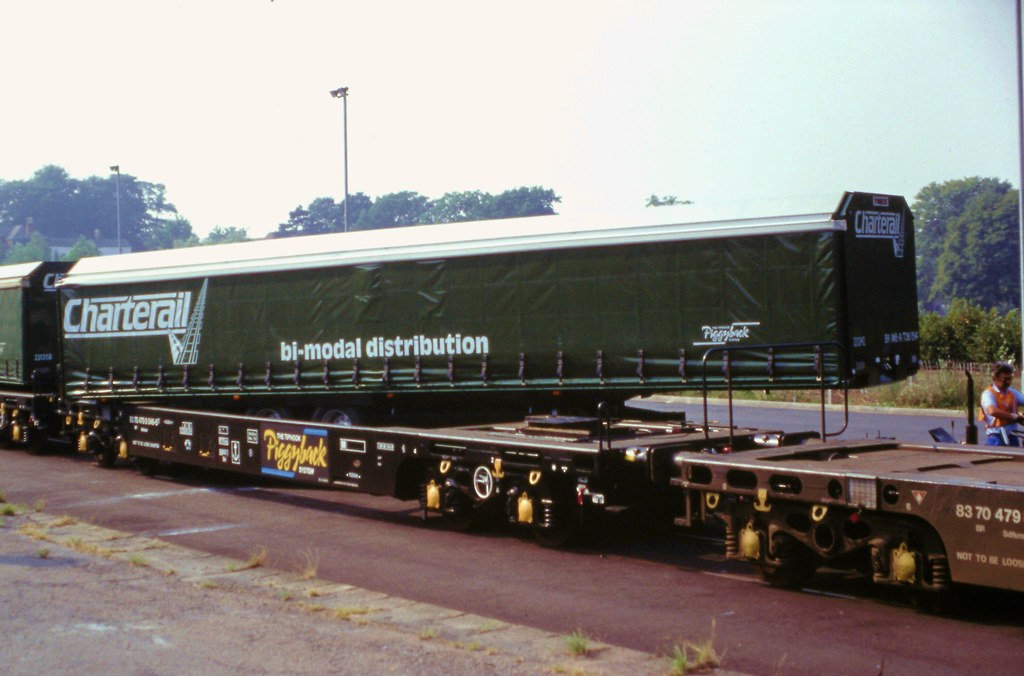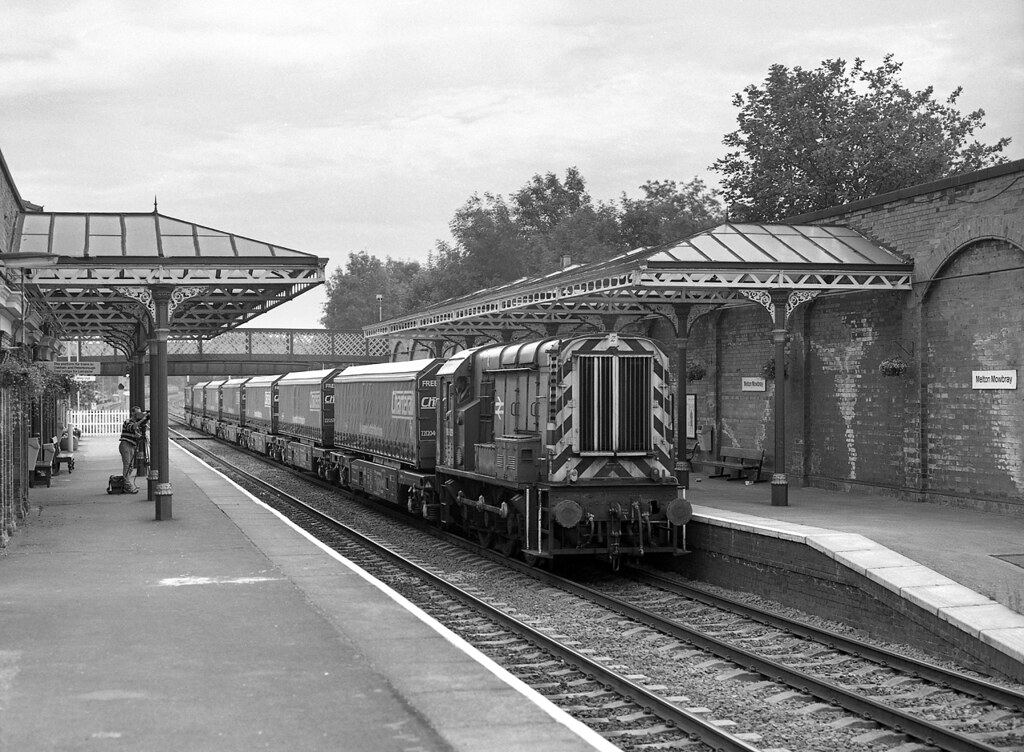Anyone remember the piggyback freight services from the Pedigree Petfoods factory in Melton Mowbray? Lorry trailers driven on to rail wagons and sent down to Cricklewood (I Think!) for onward delivery to the south east. Trailer was reversed onto the wagon via a ramp, then swung round into position.
I remember at the time it was a big thing being the first of its type in the UK (I believe). Got featured on Tomorrows World and even had a visit from a Tory battle bus during an election campaign. Containers won the day in the end and piggyback system died a death. PP had a regular container service as well that was loaded from a crane on the loop just to the east of Melton station (crane still there I think, they used brown curtain sided containers). This piggyback system is why the sidings next to Melton station are tarmac'd. Having lived in Melton in the 80s and having seen some freight videos from the US where trailers are often sent by rail it just brought up some old memories.

I remember at the time it was a big thing being the first of its type in the UK (I believe). Got featured on Tomorrows World and even had a visit from a Tory battle bus during an election campaign. Containers won the day in the end and piggyback system died a death. PP had a regular container service as well that was loaded from a crane on the loop just to the east of Melton station (crane still there I think, they used brown curtain sided containers). This piggyback system is why the sidings next to Melton station are tarmac'd. Having lived in Melton in the 80s and having seen some freight videos from the US where trailers are often sent by rail it just brought up some old memories.



